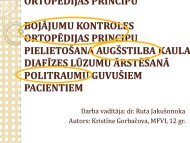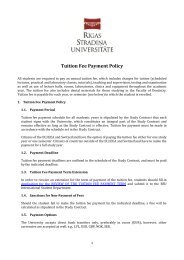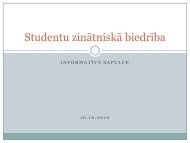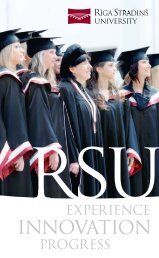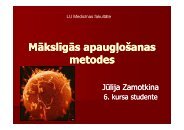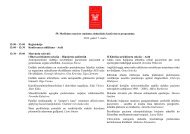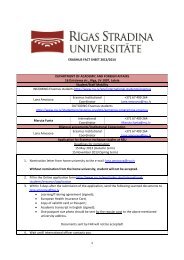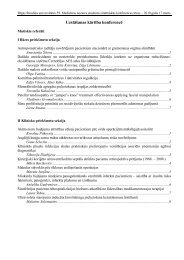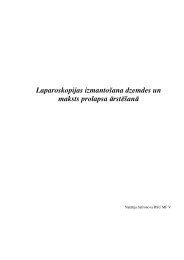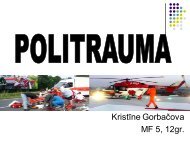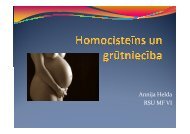History of Latvia: a Brief Survey
History of Latvia: a Brief Survey
History of Latvia: a Brief Survey
- No tags were found...
You also want an ePaper? Increase the reach of your titles
YUMPU automatically turns print PDFs into web optimized ePapers that Google loves.
On 14 June 1987, the commemorative day <strong>of</strong> the 1941 deportations, the human rights group Helsinki-86, which had been foundedone year earlier, organised a flower-placing ceremony at the Freedom Monument (<strong>Latvia</strong>’s symbol <strong>of</strong> independence that waserected in 1935). This was an unprecedented event that demonstrated the rebirth <strong>of</strong> national courage and self-confidence in <strong>Latvia</strong>.A second, and even larger, demonstration took place on 23 August 1987, the anniversary <strong>of</strong> the ‘Molotov-Ribbentrop Pact’.On 1 and 2 June 1988, the Writers’ Union held a congress during which the <strong>Latvia</strong>n intelligentsia discussed the democratisation <strong>of</strong>society, <strong>Latvia</strong>’s economic sovereignty, ending migration from the USSR, the transformation <strong>of</strong> industry and the protection <strong>of</strong> <strong>Latvia</strong>nlanguage rights. Over the course <strong>of</strong> these days, for the first time in post-war <strong>Latvia</strong>, the secret protocol <strong>of</strong> the ‘Molotov-RibbentropPact’, which had determined <strong>Latvia</strong>’s fate after 1939 and the decades <strong>of</strong> occupation, was publicly acknowledged.The congress <strong>of</strong> the Writers’ Union stirred up the public and provided an additional stimulus for the general process <strong>of</strong> nationalrevival.In the summer <strong>of</strong> 1988 two <strong>of</strong> the most important organisations <strong>of</strong> the revival period began to organize themselves: the <strong>Latvia</strong>nNational Independence Movement (Latvijas Nacionālās Neatkarības Kustība or LNNK) and the <strong>Latvia</strong>n People’s Front (Latvijas TautasFronte or LTF). Soon afterwards, the more radically inclined Citizens’ Congress (Pilsoņu Kongress) entered the political arena and calledfor complete non-compliance with the illicit Soviet regime. All <strong>of</strong> these organisations had a common goal — the reinstatement<strong>of</strong> democracy and independence. On 7 October 1988, there was a mass public demonstration that was dedicated to the issue <strong>of</strong><strong>Latvia</strong>’s sovereignty and the establishment <strong>of</strong> judicial order. The first congress <strong>of</strong> the <strong>Latvia</strong>n People’s Front was held on 8 and 9October. This organisation, which united 200 000 members under the leadership <strong>of</strong> famous journalist Dainis Īvāns (b. 1955), becamethe guiding force <strong>of</strong> the revival movement in <strong>Latvia</strong> and the return to independence.The mass demonstration forindependence in early 1991.The map displays the locations <strong>of</strong>major Soviet military-industrial plantsin the three Baltic States. Almost everylarge city had such plants, whichmanufactured equipment for the Sovietarmed forces. In <strong>Latvia</strong>, most wereconcentrated in Rīga and Liepāja.43



